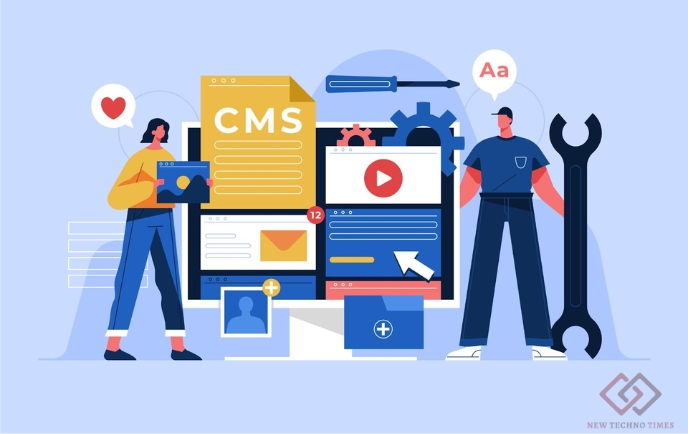It has become increasingly important for technology to be user-friendly and easy to use as every business is working for a better tomorrow. In website development and content management, CMS is playing a huge role. It not only makes content storage simplified but also improves the overall user experience on a website.
As far as CMS is concerned, there are many names that emerge and work to offer a quality interface. Discussion is not limited to Craft CMS vs WordPress or Drupal vs. Shopify. In this regard, headless CMS is making a noise and simplifying content management for the future.
What is a Headless Content Management System?
It is a type of content management system where content is managed and organised at the backend repository. There is no need to look for the content on the front end. In this type of CMS, a frontend is separately built with the help of APIs to fetch and show the content to users.
It brings flexibility to the system and brings agility in development while giving a smooth experience to users. The headless CMS has many features like personalised content delivery, simplified integration, and flexible architecture that make it the choice of the future. A headless CMS supports multi-channel publishing because of its architecture.
Elements of a Headless CMS
Here are some of the features that make a headless CMS unique and different from a traditional CMS:
- A headless CMS uses APIs to connect apps, making them flexible and scalable, making it enable many features.
- In a headless CMS, microservices are small apps connected via API. These can create big systems that can be updated easily.
- Headless CMS integrates tools through APIs, making it easy for developers. It keeps systems and marketing tools up to date with personalisation.
- Headless CMSs have simplified navigation and come with automation features.
Also Read: Benefits of Hiring WordPress Web Development Services to Your Website
Use Cases For Headless CMS
Because of flexibility and ease of use, a headless CMS is being utilised in many horizons across industries. Here are the top use cases of a headless CMS:
eCommerce
eCommerce platforms are benefitting from headless CMS by separating product information and catalogue management from the front-end shopping experience. This allows for quicker updates and changes without disrupting the customer experience.
IoT based application
IoT devices require quick content delivery and updates. A headless CMS is being used to manage content for these devices, ensuring that users receive timely and relevant information.
Progressive Web Apps (PWAs)
PWAs are web applications that provide a native app-like experience. Headless CMS enables the easy management of content for PWAs, ensuring consistent updates and a smooth user experience.
Mobile Apps
Headless CMS provides an efficient way to manage and update content for mobile apps without requiring app updates. Headless CMS is being used especially useful for organisations with multiple apps that share similar content.
Voice Assistants
With the rise of voice-enabled devices, a headless CMS is being used to manage content for voice assistants. It can deliver relevant information and responses to user queries.
Also Read: The Pros and Cons of Hiring Freelance vs In-House Flutter Developers
Benefits of Headless CMS
Website development with a headless CMS takes a longer time to make your website live, but it is worth it as it provides custom front-end development and third-party API integration. Here are the top benefits of using headless CMS for a website and content management:
Multi-Channel Content Delivery
Headless CMS allows you to deliver content seamlessly across various platforms and devices, such as websites, mobile apps, smart devices, and more. The content can be tailored to fit each channel’s specific requirements.
Personalisation
Headless CMS allows for advanced personalization by delivering tailored content based on user behaviour, preferences, and demographics, enhancing user engagement.
Uniform availability and localisation
Managing content for different languages and regions can be streamlined with a headless CMS, ensuring consistent translation and localization across all platforms.
Collaborative Workflows
Multiple teams can work concurrently on content creation and management using a headless CMS, improving collaboration and content quality.
Scalability
Headless CMS systems are designed to scale easily, making them suitable for projects that might experience rapid growth in terms of content or user base.
Developer-Friendly
Developers can use their preferred programming languages and frameworks to build front-end applications, enabling them to create unique and dynamic user experiences.
Microservices Architecture
Headless CMS fits well with microservices-based architectures, where different components of an application can be developed and deployed independently.
Also Read: Why Hire A Web Development Company VS. A Freelancer?
Utilise the Best Headless CMS For Your Business Website
The future is of headless CMS as it comes with the flexibility to offer a personalised experience to every user. If you want to deliver content smoothly and faster, choosing a headless CMS is a great way. Whether you choose a Drupal development agency or hire headless CMS developers, you can maximise the potential of content management and efficient delivery with ease.
My name is Christopher Bell, and I work as a content manager. As I strive to establish ourselves as a trustworthy brand, we believe that connecting with other websites and blogs in the industry is an excellent way to achieve this.

